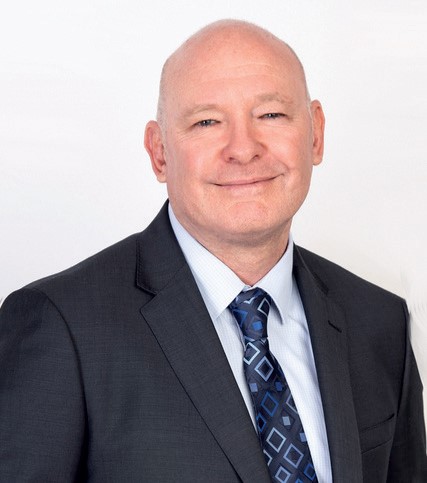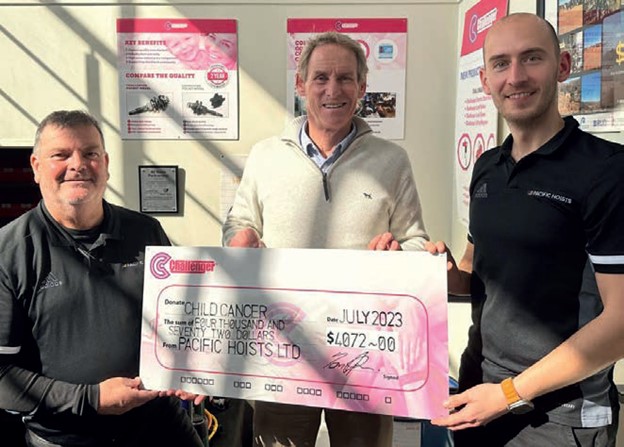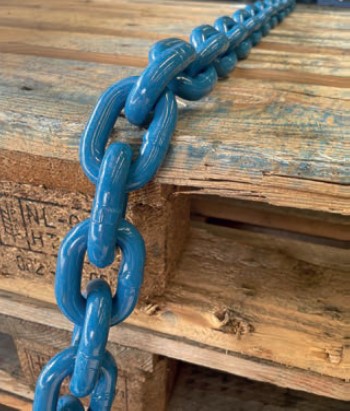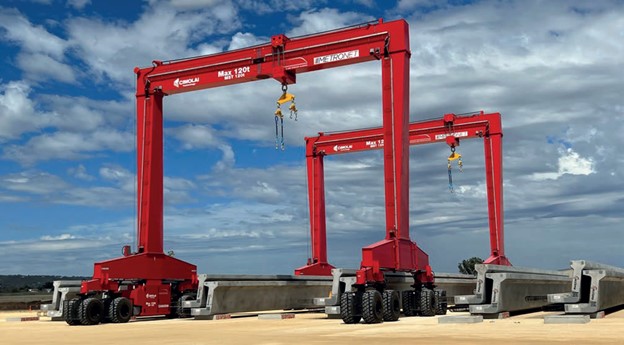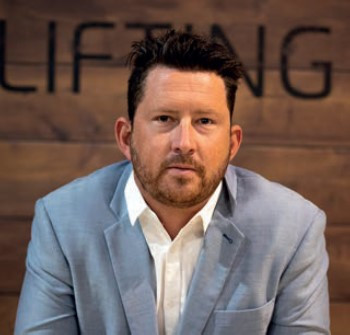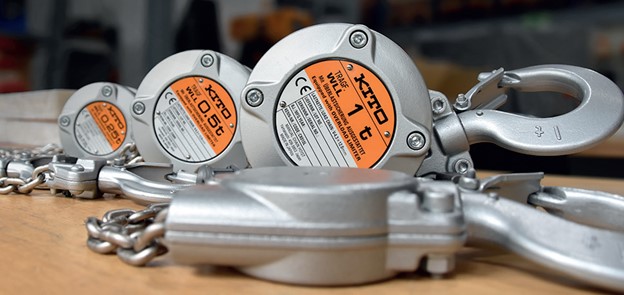News round-up: Australia and New Zealand
21 December 2023We catch up with several lifting developments in Australia and New Zealand.
Lifting equipment experts Ranger Lifting became Australia’s first Lifting Equipment Engineers Association (Leea) Accredited Training provider earlier in the year. The company underwent a series of audits and evaluations to become an Accredited User Training Company, according to Leea’s Accredited Training Scheme (ATS).
“[ATS has] been around for decades, it’s just that we’ve never had anyone in Australia providing this type of training opportunity,” says Justin Boehm, Leea’s regional manager – Australia and New Zealand. “This is a fantastic development for our region and having Leea’s first [ATS] partner in Ranger is excellent news for end users in our industry.”
Off the back of that announcement, Ranger Lifting launched Australia’s first Leea ATS for end users.
The online training programme is aimed at enhancing safe work practices within the lifting sector. Called Safe Use of Lifting Equipment, it accessible through Ranger Lifting’s Learning Hub (https://learning. ranger.com.au/courses/safe-use-of-liftingequipment).
Meeting Australian Standards criteria, the Safe Use of Lifting Equipment training course is a result of three years of development. The programme covers selection, safe-use, pre-use checks, identifying defects and maintenance. The course is divided into ten modules including Chain Slings and Components, Wire Rope, Shackles, Lifting Beams, Chain and Lever Blocks, among others.
Ranger Lifting says that it had identified what it calls “a significant void in the market” concerning end-user training.
“There simply hasn’t been an avenue to educate end-users on the safe utilisation of lifting equipment,” it continues. “While individuals can attain dogman and rigger [a dogman is a specialist in slinging and guiding loads handled by cranes, while a rigger is responsible for anything above the crane hook as well as below] certifications, these alone, according to Australian Standards, do not suffice for establishing competence. We’ve been evaluating this training gap, but dedicating sufficient time to address it has been a challenge.”
Ashley Thacker, the general manager of Ranger Lifting, picks up the story: “We seized the opportunity presented by Covid to thoroughly assess this gap and devise strategies to fill it. We laid out a framework outlining the potential course coverage. Recognising that industry recognition was essential, we ensured Leea certification underpinned the course.”
The course caters to anyone using lifting equipment across various industries. Successful completion earns participants a Leea accreditation and a certificate of completion. The collaboration with Leea guarantees the course’s content adheres to the highest standards.
“We envisioned a modular training programme to facilitate flexible learning at one’s own pace. For instance, a crane hire company could enrol teams and complete modules around their work schedules. They could invest two hours in the course and resume a week later,” Thacker notes.
“Daily accidents occur all too frequently. During my advanced rigger’s course at TAFE [Technical and Further Education], lifting gear received minimal attention – not more than five minutes. Presently, the dogman’s ticket devotes more time to it, yet not exceeding an hour and merely covering fundamentals. Australian standards delve extensively into competency requirements. They stipulate that the person using lifting equipment should be capable of identifying the relevant standard, a task few can accomplish,” Thacker emphasises.
ATS has existed for decades, yet had yet to be offered in Australia, as Boehm, says: “ATS is a well-established product in the UK, the Middle East, and Southeast Asia. However, a local equivalent had been missing until now. Ranger Lifting, a pioneering entity within our industry, has crafted impressive course content.
“This development significantly benefits our region, and having Ranger as our inaugural ATS partner is excellent news for industry end-users.”
LEGEND LIFTING
A new lifting and rigging equipment provider has been launched in Brisbane, Queensland.
Legend Lifting’s product range features grade 100 chain and fittings and grade 80 fittings. The company says that all equipment “is meticulously designed, rigorously tested, and certified in accordance with Australian Standards”. It adds that it is looking for distributors in the country.
Speaking at the time of the launch, managing director Ben McIlroy, said: “I am honoured to lead a team that is deeply committed to excellence, reliability and customer satisfaction.
“We are committed to exceeding your expectations and being your go-to partner for all your lifting, rigging, towing and recovery equipment needs.”
KITO CROSBY
Kito PWB, a subsidiary of Kito Crosby operating in the Oceania market, has welcomed the CX010 hand chain block with 1.0t load capacity into its range. It joins the existing 250kg and 500kg options.
Like the smaller models, the body is made of lightweight, die-cast aluminium housing, while the inside is equipped with a two-stage precision gear: a heat-treated steel frame serves as a stable bearing for the gearwheels, while the gearwheels are cold-forged “for maximum and constant performance”, says Kito Crosby. The chain sprocket is high-quality casted and matched to the gearbox to carry the nickelplated load chain. The heat-treated gears and brake system are sealed to protect against damage from dust and water.
The CX range comes standard with an overload limiter, plus a Twist Checker tool that determines quickly if the load chain is twisted.
“The hoists are easy to carry, easy to handle, and ideal for light loads in high or difficult-to-reach places, making them the perfect choice for repair, assembly or maintenance work,” says Kito Crosby.
“When it comes to mobile applications, users typically prioritise two factors: the weight of the equipment and its load capacity. The goal is to have the lightest possible weight combined with the strongest power. In this regard, the compact CX now offers three different variants. The latest addition, the CX010, weighs just 7.3kg and boasts a 1.0t load capacity, providing more options for handling heavy loads.”
PACIFIC HOISTS
Pacific Hoists, which operates in both the Australian and New Zealand lifting and materials handling markets, announced earlier in the year that its Pacific Hoists New Zealand arm made a contribution of NZ$4,000 to the Child Cancer Foundation in FY22-23.
“This year’s donation is a testament to our unwavering commitment to making a positive impact on the lives of these brave young fighters and their families,” the company said.
“With this year’s donation, our cumulative contributions have now soared to nearly NZ$80,000 – a milestone that speaks volumes about the difference we can make when we come together.”
The Child Cancer Foundation is a New Zealand charity that provides support to children and families on their cancer journey, through its range of Challenger products, which includes magnetic lifters, lever hoists, chain blocks, air hoists and clamps.
ENERMECH
Global technical solutions and services specialist EnerMech has appointed Rhys Humphries as general manager and country lead for the New Zealand arm of the business. His key focus is to continue to work collaboratively with current clients and expand the firm’s portfolio in the region.
Humphries has joined EnerMech from NZ Corrosion Services, where he was CEO.
With over 35 years’ industry experience, including senior roles at Dialog Fitzroy Engineering Group and L&M Energy, Humphries’ career includes project management, green and brownfield engineering, operations management, maintenance management, construction and commissioning.
In his new position, he will oversee more than 60 employees across the North and South Islands.
“I am thrilled to be at the helm of this division and support the strategic growth plans for the business. EnerMech New Zealand is full of exceptionally talented people and I have enjoyed getting to know everyone better over the past few months,” he says.
“With so many new projects already in the pipeline, it’s an exciting time to come on board. EnerMech has a great reputation for effectively responding to client issues with integrated action plans. With well-resourced interconnected service lines to leverage, the company is in a very unique position to deliver solutions which reduce campaign complexities and mitigate risk, while promoting safety and integrity.”
Garry Ford, EnerMech regional director for Asia-Pacific, added: “With Rhys’s strong track record for motivating high-performance teams, we are confident the combination of this with his business acumen and commitment, will see our ambitions for the region become a reality.”
EnerMech was established in 2008 and provides critical asset support across the full life cycle to multiple end markets including oil and gas, LNG semiconductors, nuclear and clean energy. With offices across the world, it carries out a range of services, including providing overhead crane upgrades, specialist offshore crane operation and maintenance services, inspections, and wire rope and sling supply and management.
CIMOLAI TECHNOLOGY
Cimolai Technology has supplied cranes to a transport project in Australia.
Custom-built gantry cranes have been handling and transporting concrete precast elements for the first elevated rail line in Perth, Australia, as part of the Victoria Park-Canning Level Crossing Removal Project.
Manufactured in Italy by Cimolai Technology – which specialises in the design and fabrication of advanced and complex equipment for special projects, as well as standard units for common applications – these mobile straddle transporters have been designed to fit the exact specifications of the Armadale Line. Each crane can lift 120t, with two required to operate at once for the project’s maximum lift of 140t.
Six gantry cranes will be used on the project, with two lifting and storing L-beams at the laydown storage site in Hazelmere. A total of 530 L-beams will be installed to build the overhead rail line. Each beam is made up of approximately eight truckloads of concrete and 13t of steel. The beams are 2.2m high, 30m long and weigh 130t.
By using gantry cranes, the footprint of works is said to be “significantly reduced as this type of crane will operate within the rail corridor, which allows more trees and vegetation to be retained”.
